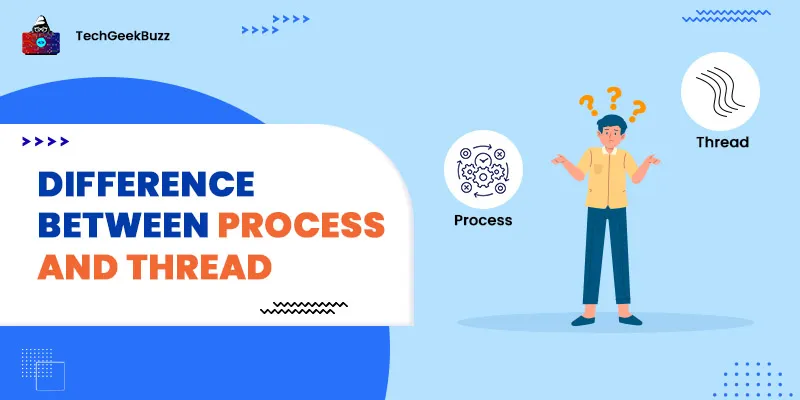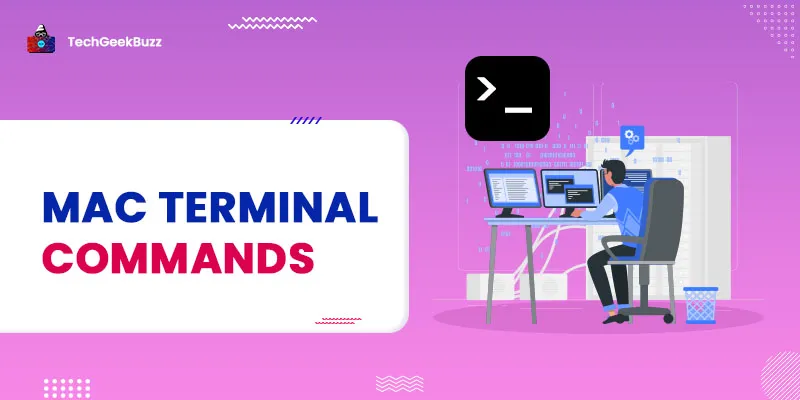When it comes to programming, we often come across the terms 'process' and 'thread'. If you are a newbie to the programming world, it is essential for you to understand what exactly these terms mean. Also, in many technical interviews, one of the frequent questions is, “What is the difference between thread and Process?”. Thread and Process are pretty much the same and interrelated to each other, which makes it so confusing to differentiate between threads and process. Here in this article, we will make you familiar with the differences between the process and thread. There are many definitions related to thread and process on the internet. What we have provided here is a simple and sort explanation so you could understand the basic meaning and function of threads and processes. Before differentiating Process and Thread, let’s have a brief introduction of both. So, let us begin.
What is a Process?
When we execute or run a program, it does not execute directly; it takes some time because there are many steps to follow while a program executes. The technical definition of a process is “When a program is in execution, it means that the program has not been executed yet, the following of all the program execution steps is known as a process. ” Alternatively, a process is a program that moves from the ready state and is scheduled in the CPU for execution. In more simple words, a process is the execution of a program that enables users to carry out various actions specified in the program. Therefore, we can define a process as an execution unit where the program actually runs. A process (main process) can create other processes called child or clone processes. This main process is called the parent process. It creates child processes to carry out multiple tasks simultaneously. In addition, the Process Control Block (PCB) is responsible for managing all the operations of the process. It is a data structure of a process and acts as the brain of the process. Moreover, it holds information about a process, such as a process id, state, priority, process number, CPU registers, etc.
Process States
Each process has the following states:
- New: A process is a new state when it is created.
- Ready: A process is ready to execute and is waiting for the processor.
- Running: A process is in execution.
- Waiting: A process is waiting for some event to occur.
- Terminated: A process terminates after its execution.
- Suspended: A process moves to the suspended state when it is in the ready state and does not have enough resources to execute.
Features of a Process
The following are the salient features of a process:
- Whenever we create a process, we need to make a separate system call to the operating system. Therefore, the creation of each process requires a system call to the operating system.
- Each process is independent, i.e., the operating system treats each process as an isolated process.
- For multiple processes to communicate with each other, there is a requirement for inter-process communication (IPC).
- A process exists within its own memory space.
What is a Thread?
The thread can be considered as a subset of Process. It is also called the lightweight process. In computing, a process is made up of multiple threads. Threads are small sequences of executions that occur during the process, and these small execution of sequences made a process. A single process has more than one thread. All threads of a specific process are interrelated to each other and run simultaneously. Furthermore, a scheduler is responsible for managing the threads of a process independently. Each thread has its own stack, register, and counter. However, the threads of a process share information, such as files, data segments, and code segments. In an operating system, the scheduler deals with the threads and assigned them resources so they could complete the work. As the threads are the subset of the same process that’s why they share the same memory.
Types of a Thread
There are two types of threads, namely, user-level threads and kernel-level threads. Let us discuss each of these types in detail below.
1. User-Level Threads
As its name suggests, users are responsible for managing user-level threads. They are easy to create and manage. Moreover, Kernal does not possess the information of user-level threads. However, it takes and manages all the user-level threads as a single process. In addition, user-level threads do not use system calls. Instead, they use user-level libraries for execution.
2. Kernel-Level Threads
The operating system is responsible for managing kernel-level threads. They are slower than user-level threads since the kernel manages the context information. Also, we need to use the system calls to create and manage this type of thread.
Features of a Thread
The following are the remarkable features of a thread:
- Threads share data, memory, files, and other resources with other threads in a process.
- Each thread has its own stack, counter, and register.
- Threads can communicate directly with each other since they share a common address space.
- You can create multiple threads via a single system call.
Difference Between Process and Thread
The following table highlights the key differences between process and thread:
|
Process |
Thread |
|
Definition |
|
| When a program is in execution, it is referred to as a Process. | Inside a process, the execution of small sequences is known as a thread. |
|
Terminating Time |
|
| A Process takes more time to terminate. | A thread terminates quickly. |
|
Dependency |
|
| Processes are independent in nature. | Threads are the subset of Processes they depend on the process |
|
Information |
|
| The process contains all the instructions so it can follow all the instructions step by step. | As threads are small and individual execution, they do not store much information about execution steps, but they use process states and resources to follow the further steps. |
|
Address Spaces |
|
| The process uses a desecrate range of memory addresses. | Threads shear their address space. |
|
Context Switching |
|
| Context Switching is slow in the process. In context switching the state of execution is stored so it could restore and resumed from the last point of execution. | Threads take less time for context switching and quickly execute from the last point which has been stored. |
|
Communication |
|
| In inter-process communication, it takes too much time to communicate between two processes. | The thread can communicate quickly with other threads in a process. |
|
Blocked |
|
| In multiple processes, if one process is blocked, the remaining process continues executing. | If a single thread gets blocked, all the related threads get blocked too. |
Conclusion
This was all about the differences between a process and a thread. A process is a program in execution, whereas a thread is a subset of a process. Processes require more time for creation and termination, whereas threads do not. Also, processes are independent and have their own memory space. Threads are also independent but share the same memory space. We hope that you found this article enlightening and interesting. If you have any doubts regarding this article, you can post them in the comment section below.
People are also reading:




